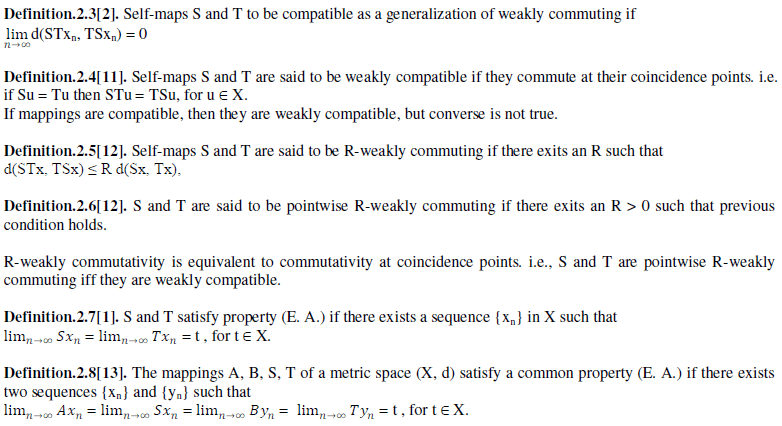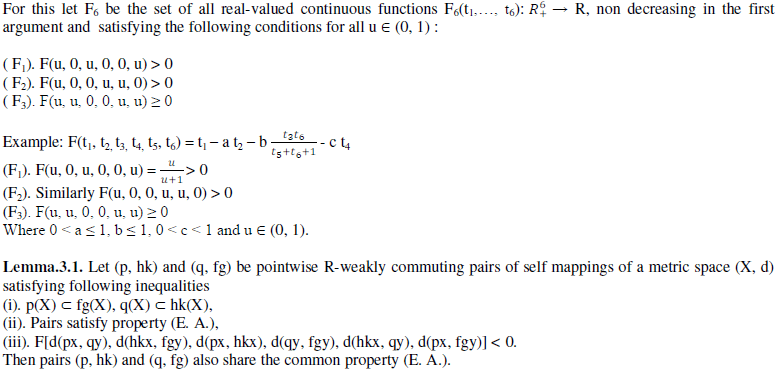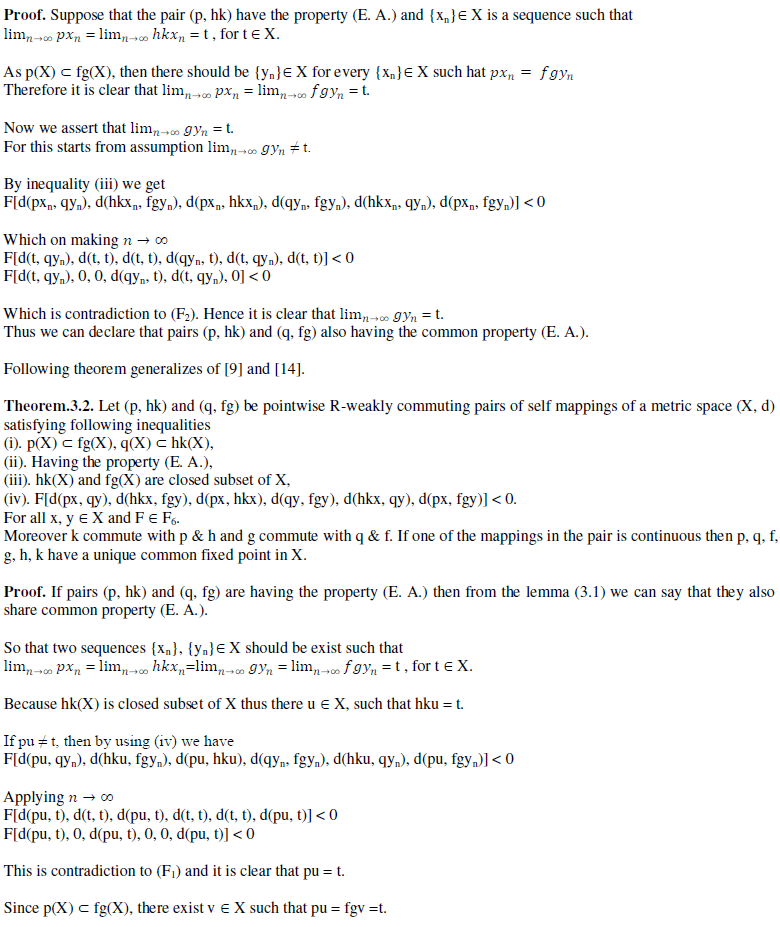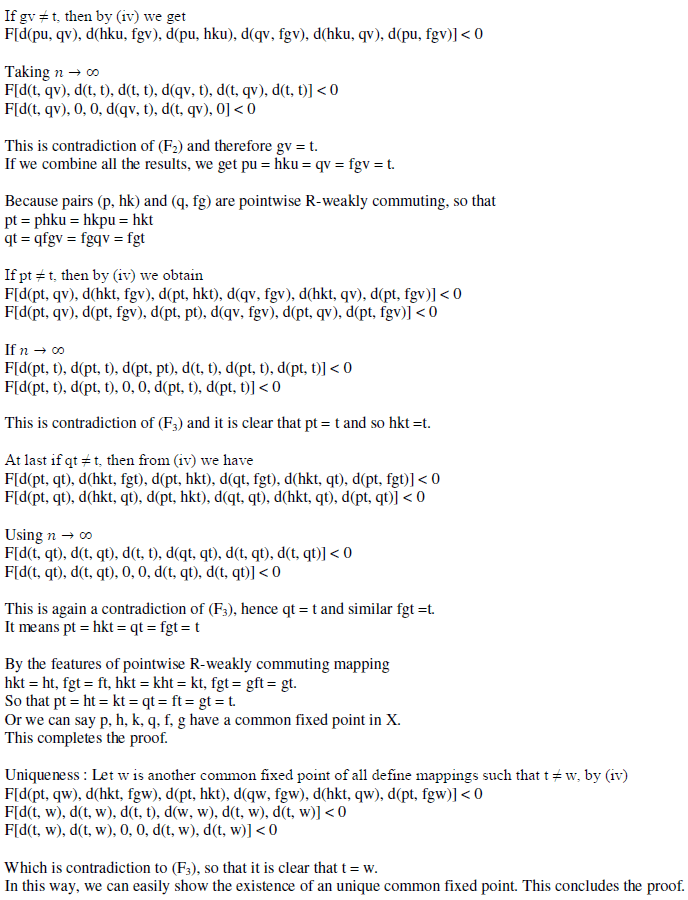ISSN ONLINE(2319-8753)PRINT(2347-6710)
ISSN ONLINE(2319-8753)PRINT(2347-6710)
G. P. S. Rathore1, Bijendra Singh2, Kirty Chauhan3
|
| Related article at Pubmed, Scholar Google |
Visit for more related articles at International Journal of Innovative Research in Science, Engineering and Technology
In order to demonstrate the utility of implicit relation in metric space, we have added common fixed point theorem through this paper. It is a generalized work on pointwise R-weakly commuting and compatible mappings sharing the common property (E. A.). This work extends the results contained in available research work over compatible mappings and as a bi-product we obtain new theorem in metric spaces.
Keywords |
| Compatible maps, pointwise R-weakly commuting mappings, property (E. A.), implicit relation |
INTRODUCTION |
| The theory of probabilistic metric spaces introduced by Menger [3], where a distribution function was used instead of non negative real number as value of the metric. Sehgal [6] derive the concept of contraction mapping theorems over there. Here it may be noted that the notion of compatible mapping is due to Jungck [2]. This concept has been frequently uses to derive theorems on fixed points. Aamri and Moutawakil [1] introduced property (E. A.) and common property (E. A.), which is a successful and popular generalization of compatible and non compatible mappings in metric space. Their work extended by Imdad et al. [5] in field of semi metric spaces while Kubiaczyk and Sharma [4] developed it in Menger space under strict contractive conditions. The concept of weakly commuting mappings in PM spaces developed by Singh et al. [14]. Kumar and Chugh [15] derived some theorems in metric spaces by using the idea of pointwise R-weakly commutativity. In present paper we utilize these concepts to prove our theorem for six mappings in PM space, which generalize known results of [7] and [9]. |
PRELIMINARIES |
| A metric is like a function that satisfies the minimal properties we might except of a distance. We begin with some known definitions. |
| Definition.2.1. A metric d on a set X is a function d : X × X → [0, ∞) such that for all x, y ∈ X : |
| (i). d(x, y) ≥ 0 and d(x, y)= 0 iff x = y, |
| (ii). d(x, y) = d(y, x), (symmetry) |
| (iii). d(x, y) ≤ d(x, z) + d(z, y) (triangle inequality). |
| A metric space (X, d) is a set X with a metric d defined on X and has a notion of the distance d(x, y) between every pair of points x, y ∈ X.We can define many different metrics on the same set, but if the metric on X is clear from the context, we refer to X as a metric space and omit explicit mention of the metric d. |
| Definition.2.2[10]. Self-maps S and T to be weakly commuting if d(STx, TSx) ≤ d(Sx, Tx), for ∀ x ∈ X |
 |
MAIN RESULT |
| To prove the fixed point theorem, we follow the idea of a class of implicit functions initiated by Popa [8], because it covers several contractive conditions rather than one. |
 |
 |
 |
CONCLUSION |
| In this paper through Theorem 3.2 we introduce the new concept of common fixed point in case of newly defined implicit relation. |
References |
|